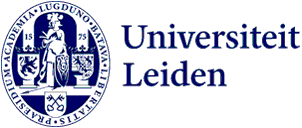
Researchers and members of the public bring a sustainable world a little closer
Researchers, civil servants and local residents met on 27 September to talk about partnering for sustainability. What were the results? In a green ‘city oasis’ in the centre of The Hague they spoke about the energy transition, bottom-up initiatives and citizen science.
As the first autumn storm raged over The Hague, Bas Nijboer welcomed everyone to the symposium. Despite the weather, the greenhouse at Spinozahof City Oasis was packed with researchers, civil servants and local community members who are all doing their bit for sustainability. What has collaboration between these groups achieved? And how can this collaboration be improved?

Keynote speaker Kees Vendrik, Chair of the National Climate Platform, spoke about the increase in community-led sustainability initiatives. ‘You can see it brewing all over the Netherlands. The bottom-up transition is becoming increasingly important.’ And yet, said Vendrik, many large organisations still see bottom-up initiatives as ‘sweet’, which is unfair because it’s becoming easier for cooperative movements to find each other and they have much to say to each other. Vendrik stressed how the energy transition needs the public and large organisations to connect.
Community-led city oasis
The symposium’s location, Spinozahof City Oasis in The Hague, shows what bottom-up initiatives can achieve. In 2013 this was still a derelict site riddled with dumped fridges and rubbish bags, says coordinator Marianne Edixhoven. ‘No one wanted to live nearby.’ She and some 200 local residents converted the site into a sustainable meeting place where people can garden, eat, attend workshops and relax. How did they manage this? Grit and determination, and a bit of creativity with the rules, says Edixhoven. ‘But if we want to change the world we have to be able to tackle those rules.’
Bringing knowledge back to academia
Professor Jan Willem Erisman spoke about Leiden University’s sustainability policy. The university is trying to join in with more bottom-up initiatives and work collaboratively on sustainability issues. ‘How do you ensure that academia uses the knowledge gained in initiatives like the City Oasis ? And how do bottom-up initiatives come about within the university?’ A tour of sustainability programmes looked at these questions.

Liveable Planet interdisciplinary research programme
One such sustainability programme is the Liveable Planet interdisciplinary research programme, where researchers from different institutes and faculties work together on sustainability. ‘We try to involve them in clinical-based initiatives such as Sustainable City Lab’, said Professor Marja Spierenburg. ‘What obstacles do people face when starting such initiatives? These could be initiatives such as the City Oasis or local initiatives struggling with energy issues. How does knowledge co-creation work? How do you deal with power relations, where some parties have more influence?’
Sustainable City Lab
Sustainable City Lab conducts research on sustainability collaboration and knowledge exchange among lecturers, researchers, students and local partners in The Hague. It asks neighbourhoods in The Hague about sustainability problems and assigns some of these to students. This resulted in SustainableTheHague.nl, for example, where students have brought together over 150 sustainable initiatives. Students also developed an app with and for energy coaches in The Hague to make it easier for local residents to identify energy-saving measures. At present Sustainability City Lab is researching local residents’ opinions on healthy food in the supermarket. The results will help the Municipality of The Hague further shape its food vision.
Plastic straws
How do you get local residents more involved in science? The public is very engaged with many topics, sometimes out of curiosity and sometimes because they are concerned, said Citizen Science Lab coordinator Margaret Gold. Citizen Science Lab looks at possibilities to conduct research with citizens, under the motto of ‘many hands make light work’. For example, in biodiversity research in 2022 citizens made more than 30,000 observations, which researchers used to gain new insights about endangered species. ‘So there’s much more you can do as a citizen than stopping using plastic straws’, said Gold.

Smart gardens
The Municipality of The Hague is also pleased with this kind of citizen science. Municipal consultant Hidde Kamst spoke about air quality research in some neighbourhoods, where residents collected the data. Residents have also placed soil sensors in their gardens for the ‘smart gardens’ project, which is measuring soil moisture and temperature, for example. Residents become more involved in municipality policy and researchers and civil servants gain essential data for their research.
More urban greenery for biodiversity
One of the researchers who is pleased with this kind of data is assistant professor Roy Remme. He researches how urban greenery in The Hague can help humans and biodiversity. This research has already led to the finding that the density of greenery is particularly important for biodiversity. Remme explained how the data collected by citizens helped improve the calculation model for urban cooling.
After the symposium there was an opportunity to network and share experiences while enjoying drinks, snacks and music. The participants could also eat with local residents who had cooked a meal in the City Oasis community kitchen.
Text: Tom Janssen
Photos: Beau Mabel Pictures
